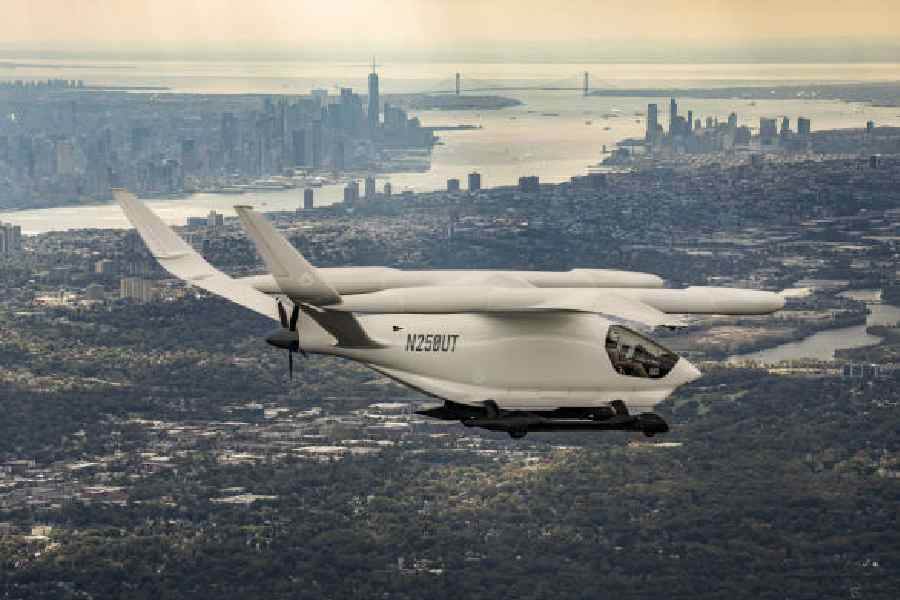Chris Caputo stood on the tarmac at Burlington International Airport in Vermont, US, in early October and looked to the clouds in the distance. He had piloted military and commercial aircraft over a long career, racking up thousands of flight hours, but the trip he was about to take would be very different.
That’s because the airplane Caputo would fly runs on batteries. Over the next 16 days, he and his colleagues flew the plane, a CX300 built by their employer, Beta Technologies, down the East Coast. They would make nearly two dozen stops to rest and recharge, flying through congested airspace over Boston, New York, Washington and other cities.
When the journey ended, Beta handed the plane over to the Air Force, which will experiment with it over the next few months. The trip offered a vision of what aviation could look like years from now — one in which the skies are filled with aircraft that do not emit the greenhouse gases.
“We’re doing some meaningful work for our state, our country and the planet,” Caputo said. “It’s hard not to want to be a part of it.”
For most of aviation history, electric aircraft have been little more than a fantasy. But technological advancements, particularly in batteries, and billions of dollars of investment have helped make short-distance electric air travel feasible — and, its backers hope, commercially viable.
Beta has raised over $800 mill-ion from investors such as Fidelity, Amazon’s Climate Pledge Fund and TPG Capital. It employs about 600 people, and recently finished building a factory in Burlington where it plans to mass produce its aircraft, which have yet to be certified by the Federal Aviation Administration.
The first will be the CX300, a sleek, futuristic plane with a 50-foot wingspan, large curved windows and a rear propeller. That plane is designed to carry about 1,250 pounds of cargo and will be followed soon by the A250, which shares about 80 per cent of the CX300’s design and is outfitted with lift rotors to take off and land like a helicopter. Both aircraft will eventually carry passengers.
Beta is one of many companies working on electric aviation. In California, Joby Aviation and Archer Aviation are developing battery-powered aircraft capable of vertical flight that, they say, will ferry a handful of passengers short distances. Those companies have backers such as Toyota, Stellantis, United Airlines, Delta Air Lines and large investment firms. Established manufacturers like Airbus, Boeing and Embraer are also working on electric aircraft.
Beta’s plane is not as large and powerful as the jets Caputo flew earlier. But what it lacks in heft, it makes up for in charm, he said, noting that the airplane is incredibly quiet and responsive, making it a pleasure to fly.
“You’re almost one with the plane,” Caputo said, “You can kind of hear and feel the air going across the flight control surfaces. We wear helmets right now because it’s experimental and safety is paramount, but we can literally take the helmets off in the aircraft and just talk to one another.”
Caputo said the CX300 and other electric aircraft could open up new opportunities, like better connecting rural areas.
Beta’s airplane has flown as far as 386 miles on a single charge, but the company said it expects its customers to generally use it to carry out trips of 100 to 150 miles. Apart from having no emissions, these are designed to be simpler to operate and maintain than conventional helicopters and planes. But they are not expected to take to the skies in large numbers for years.
Modern batteries can support limited range and weight. As a result, the aircraft that they power can generally carry only a handful of passengers, or the equivalent load in cargo.
Early on, electric aircraft are expected to compete mainly with helicopters, cars and trucks. In cities, widespread flights won’t be possible without expanded infrastructure like vertical landing and takeoff sites and public support. The cost of producing such aircraft will also be high to start, limiting their use to the well-heeled and to critical services such as medical evacuations, experts said.
NYTNS











